Stone agglomerate is a material that is often used in decoration, and for the manufacture of tabletops. Touch what you need to pay attention to choose it correctly.
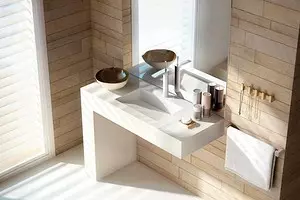
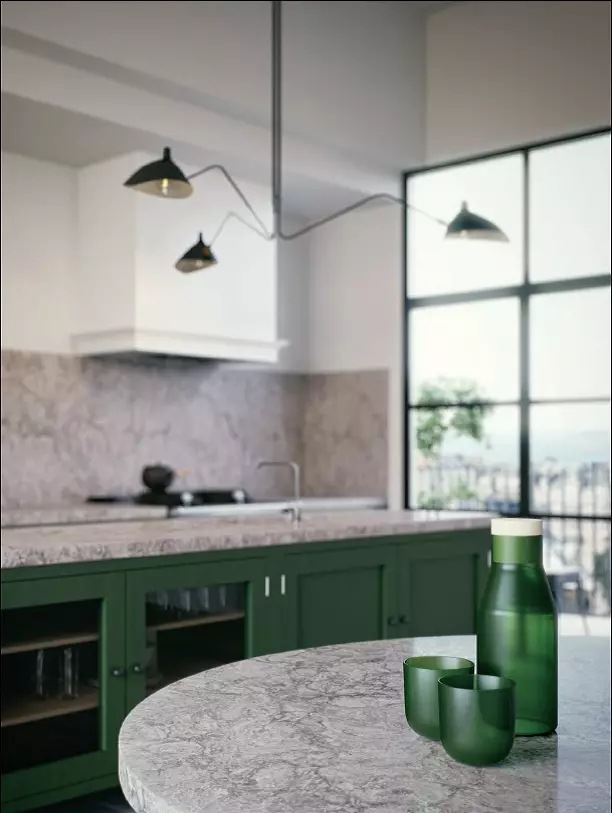
Photo: Caesarstone.
Materials imitating natural stones are distinguished by the composition and properties. Based on quartz agglomerate - natural quartz (more than 93%), polyester resin and modifying additives. Quartz is one of the most durable stones on Earth, which is inferior in this only diamond and topaz, significantly exceeding marble and even granite on the strength of the blow and bend. Due to the addition of the elastic polyester resin, the agglomerate becomes less fragile than its natural analogue, and calcium additives make connections between the components even more reliable.

Photo: Caesarstone.
Due to the dense non-porous structure, high heat resistance and impact resistance, the quartz agglomerate practically does not have restrictions on the use in the interior, in contrast, for example, from acrylic stones, with a large number of synthetic resins in the composition. To understand what kind of stone in front of you, just put a hand on him. If the surface seems cold - this is an agglomerate, and if the warm is an acrylic stone.
The agglomerates are often used as working surfaces of kitchen countertops and countertops in bathrooms and window sills. Of them make coffee tables and work surfaces of cabinet furniture, as well as they are used as a facing material for decoration of walls, floors, stairs stairs. On the domestic market, this product is represented by many manufacturers, including: Caesar Stone, Cambria, Han Stone, Plasa Stone, Quarella, Samsung Radianz, Santamargherita, COSENTINO (Silestone Brand), Technistone.
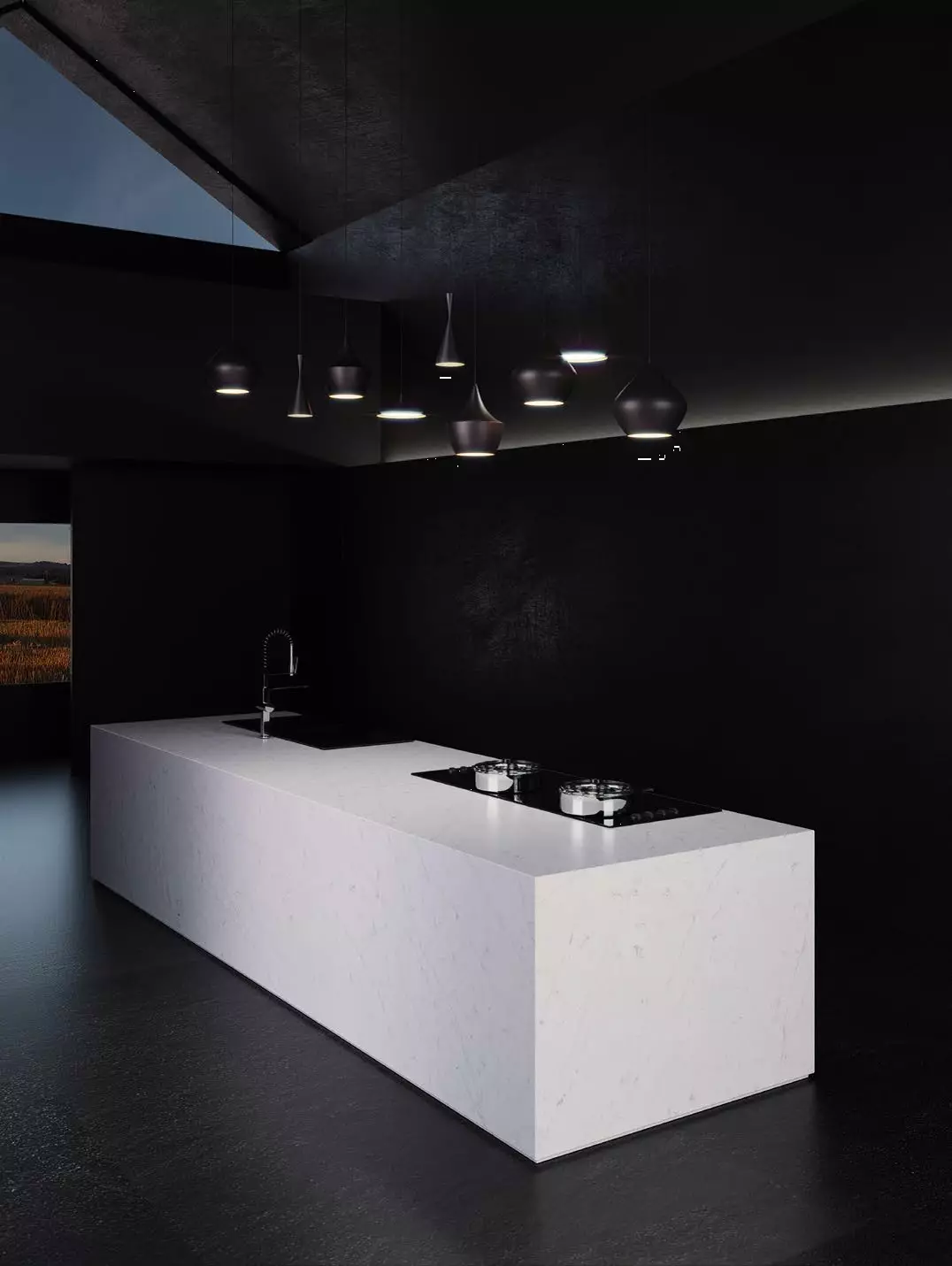
Photo: Silestone.
Criteria for selecting agglomerate:
1. Pay attention to the brand
Focus on the fame of the company-producer of agglomerate, and to the presence of its official representation in Russia. In this case, the name serves as a guarantee of the quality of the finished product, due to strict control of the feedstock, compliance with the proportions and strict consequences of the technological process. Leading manufacturers in the manufacture of agglomerate use high-quality expensive resins, which during operation do not emit harmful substances, and stone crumbs of various fractions. Others can enter the quartz dust, which reduces the cost of the agglomerate, but makes it less resistant to shocks and less durable.
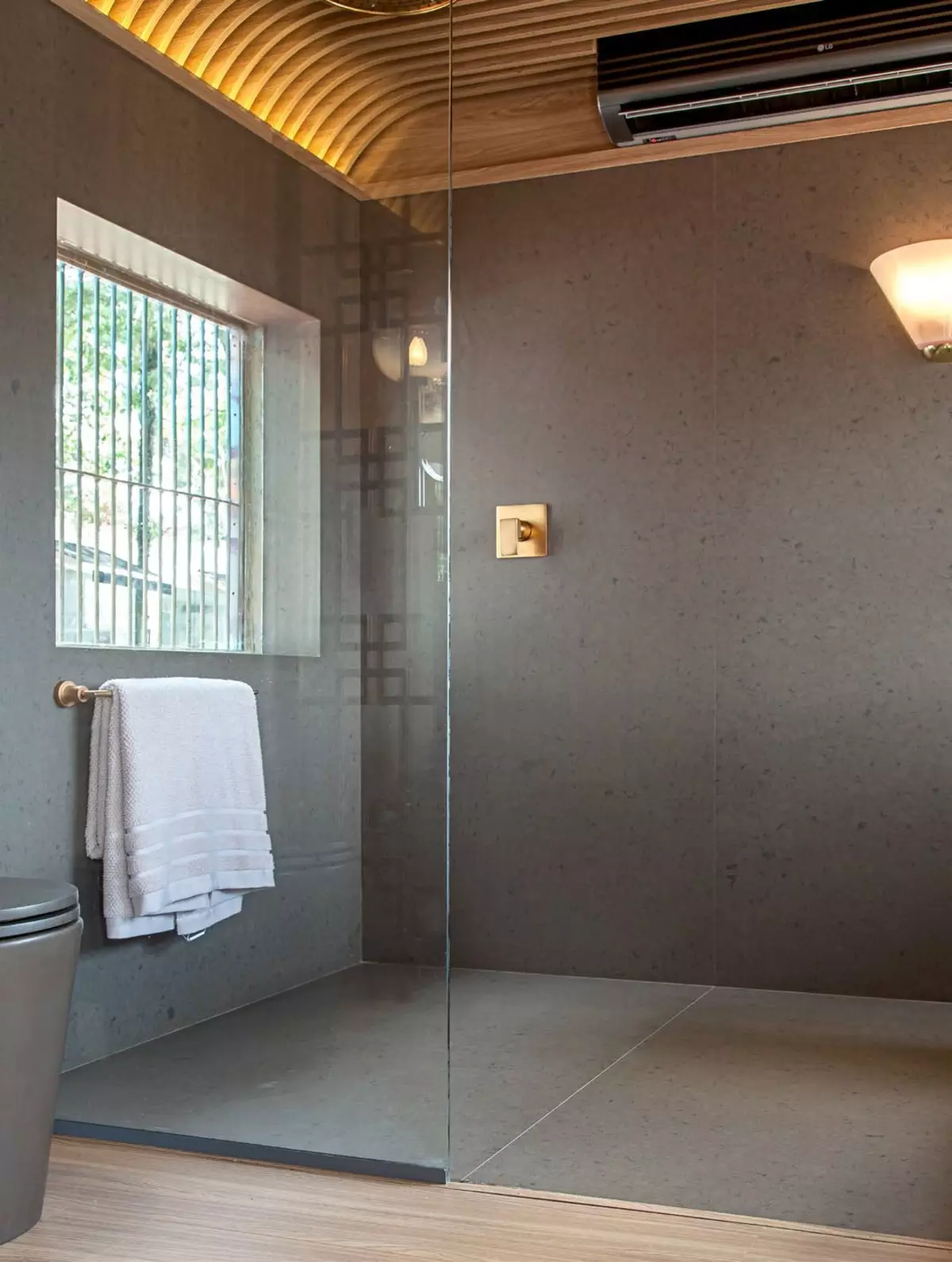
Photo: Silestone.
2. Check certificates for products
Before purchasing a kitchen countertop, ask the certificate of compliance with the International NSF sanitary and sanitary safety standard. It indicates that the material is suitable for contact with the products, and all that lay on the table can be used without a doubt.
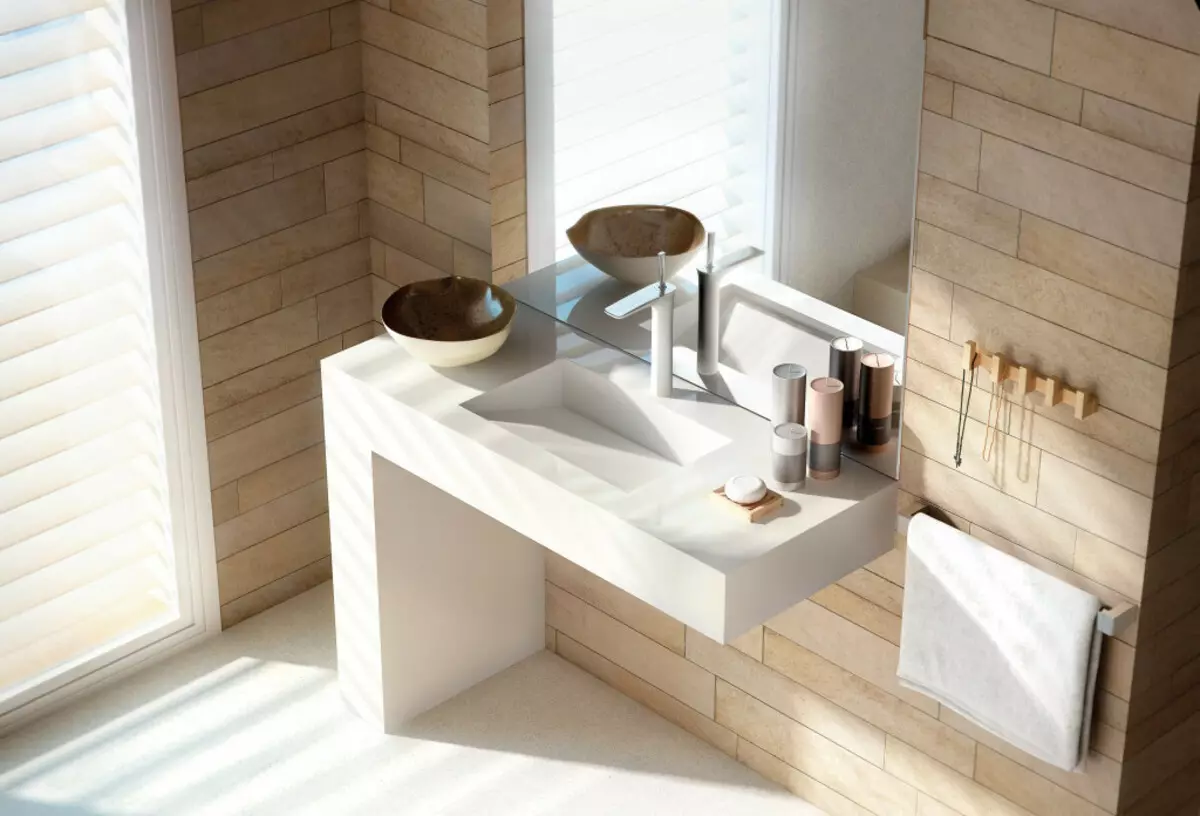
Photo: Silestone.
3. Make sure the material safety
Pay attention to the presence of Sanitary and epidemiological conclusion of Rospotrebnadzor. This is the official proof of absolute security for a person in accordance with hygienic and radiation standards.
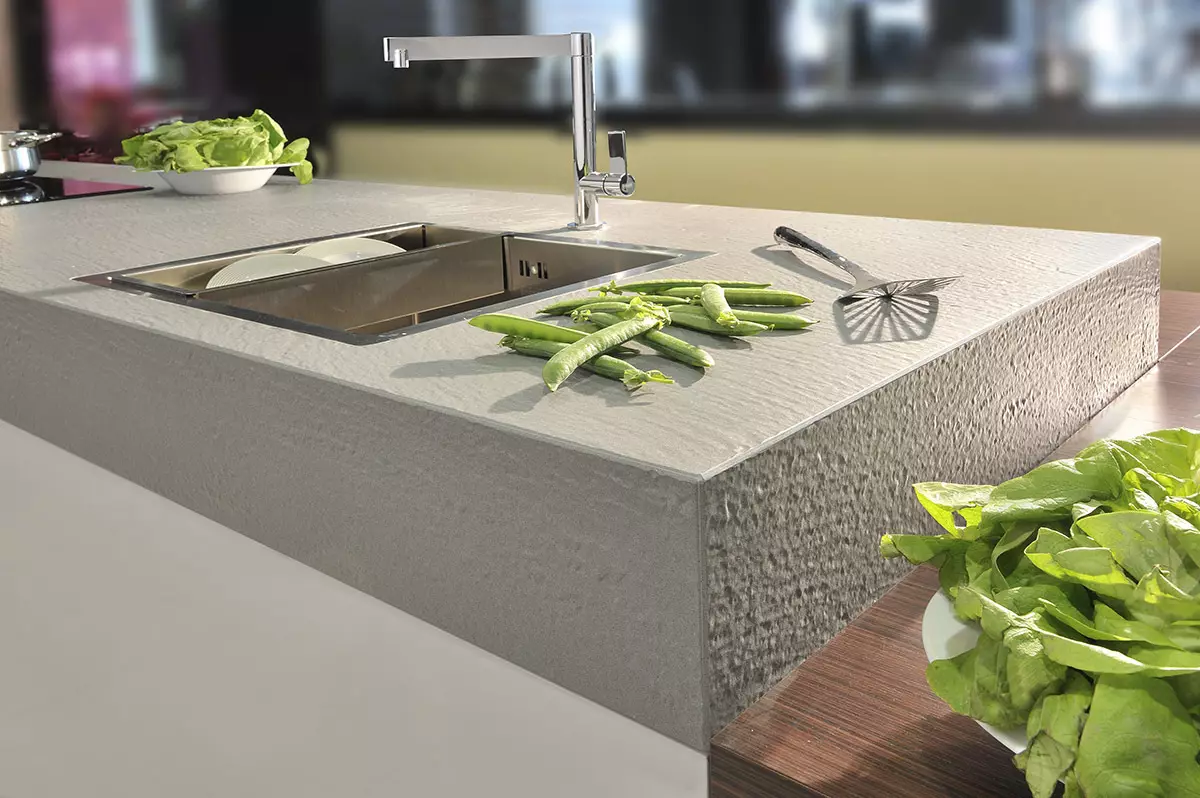
Photo: Technistone.
The cost of 1 m² of quartz agglomerate with a thickness of 30 mm (depending on the manufacturer and collection) ranges from 10 to 80 thousand rubles. Most buyers prefer material, 1 m² of which is just over 10 thousand rubles. It is important to remember that we buy not a stone slab, but a finished product, for example, a countertop. Its price is from the cost of material, manufacturing and auxiliary works (measurement, transportation costs, installation).
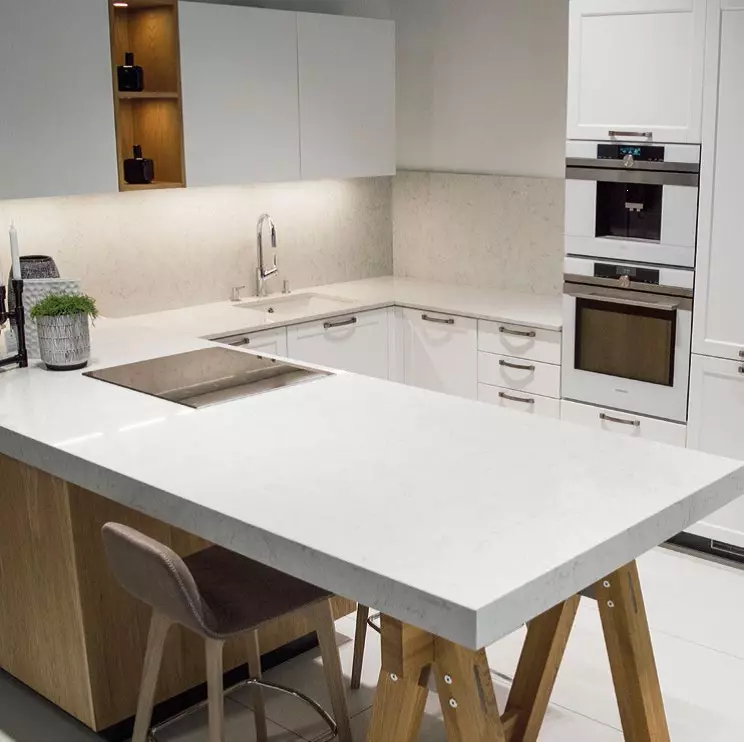
Photo: Technistone.

